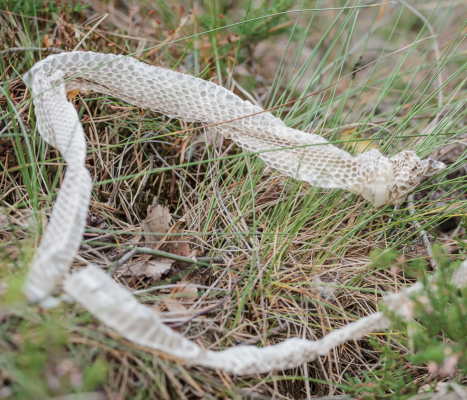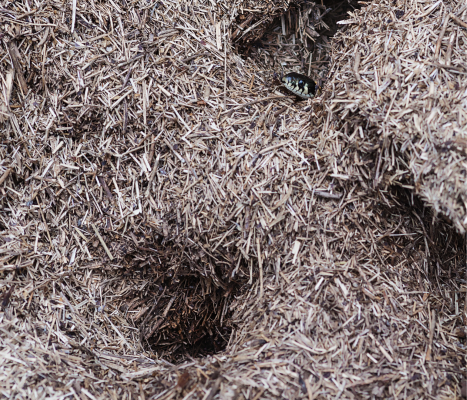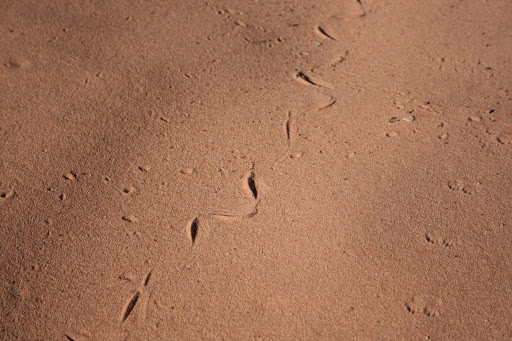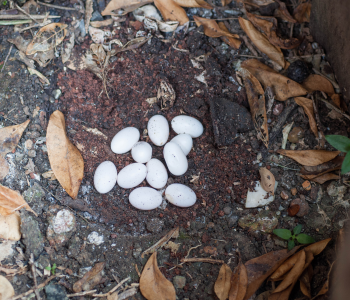Snakes are some of the scariest and deadliest animals that can infest your yard.
The worst part is that infestations often go unnoticed for extended periods of time. Often, you won’t notice a snake infestation until you hear it or see it right in front of you.
Don’t stress out any longer.
In this post, I have created the ultimate guide to getting rid of snakes.
Let’s get started.
How To Get Rid of Snakes In your Yard Naturally
1. Use Snake Traps
Snake traps are one of the most common methods used to get rid of taps.
Traps are effective with smaller infestations but not with large infestations.
The traps won’t be sufficient to get rid of the snakes in your yard with large infestations.
You must keep the traps active for extensive periods for them to be effective.
Although it might seem like the snakes are gone, snakes can stay in hiding for long periods.
There are several different options when choosing the type of trap you want to use.
- Humane Traps / Funnel Taps
- Glue Traps
Humane / Funnel Traps
Humane Traps allow you to keep the snake alive to relocate it to another location or call a pest control company to relocate the snake.
While this method keeps the snakes alive, you should be careful when handling your trap.
These traps have a simple design. They allow snakes to enter but not exit.
To make these traps more effective, I suggest you bait the trap.
Bait is more effective if you use live bait.
Live bait will attract snakes more often and faster than letting the snakes enter the trap naturally.
While live bait is the most effective but it can be difficult to find live bait.
I recommend using:
- Mice
- Frogs
- Insects
- Small rodents
The best place to get live bait is at your local pet store or an online source. When purchasing bait online it’s important that they are live bait and not frozen or dead.
Glue Traps
Glue traps are another effective method you can use to get rid of snakes.
The difference between glue traps and humane traps is that glue traps will typically kill the snake.
The downside of using glue traps is that they don’t always kill snakes quickly.
When removing your glue traps, be cautious with the snake. In some cases, the snake will still be able to snap at you.
Place your glue traps anywhere that snakes hide. This can be among piles or leaves or inside bushes.
To make them more appealing to snakes, I recommend you use box covers on your snake traps. These should have small holes on either side to allow snakes to enter the box.
You can also add soil, leaves, and branches inside the box as well. When using an object inside, don’t place too many things inside. This can reduce the effectiveness of the glue trap. If possible, place any object around your trap and not on the glue trap.
You can make your glue traps more effective by adding bait to your trap.
Typically live bait is not a practical option, but you can use dead or frozen bait. As an alternative to bait, you can try baiting your glue trap with raw meat or chicken.
2. Plant Snake Repelling Plants
You can also use plants to get rid of snakes. To do this, you will need to plant snake repelling plants around your yard or home.
This will drive snakes away, especially if they commonly hide inside bushes or your garden.
You will typically need to these plants at multiple locations around your yard.
Plants have a limited range. For example, a single plant can’t repel snakes from a 5,000 sqft yard.
An excellent way to measure a plant’s range is to stand in front of the plant and walk away until the scent is no longer present. This is the range where the plants will remain effective.
Some of the most effective plants that repel snakes include:
- Lemon Grass
- Marigold
- Dracaena Trifasciata or Mother-in-law’s tongue
- Garlic
I recommend creating a barrier around your home with these plants every 5-10 feet apart. You want to place these around your yard where snakes are likely to hide or come from.
3. Build a Fence Around Your Home
The best way to get rid of snakes is exclusion.
To do this, you can either build a fence around your home or reinforce your fence to prevent snakes from getting inside.
Common fences used around the United States include chain link fences or picket fences.
To reinforce your fences, you can install wire mesh or privacy screens on your fence. This will prevent snakes from easily getting into your yard.
For the most effective use snake fence, you want to use a metal mesh with gaps that are no larger than ½ inch and at least 36 inches high.
You also want to make sure that there are not any holes or gaps between the ground and your fence. Snakes will easily squeeze their way under your fence if this is the case.
In some states, snakes are apart of the ecosystem, so removing them completely is impossible. This is especially true if you live near wooded or desert areas.
Snake fences are a thin metal mesh fence that is applied around your entire property. These will prevent snakes from entering your property.
4. Eliminate Rodents and Other Snake Food
Most snakes are carnivores. This means that they will feed on small animals that they can swallow.
Some common animals that attract snakes towards your home include:
- Cottontails
- Rats
- Mice
- Turtles
- Frogs
- Toads
- Cicadas
- Grasshoppers
- Lizards
- Other snakes
- Earthworms
- Slugs
- Geckos
- Squirrels
- Chipmunks
You want to make sure you don’t have any other common animal infestations around your home.
Some of the most common snake food sources around homes are lizards, mice, rats, turtles, frogs, and chipmunks.
Some of the easiest ways to get rid of the food sources above include building fences and using traps. Most snake prey or food can be eliminated by effectively implementing these two strategies.
Below are some references that can help you get rid of any animal issues you might have around your home.
Resources:
- How To Get Rid of Squirrels
- How To Get Rid of Lizards
- How To Get Rid of Geckos
- How To Get Rid of Frogs
- 7 Ways To Get Rid of Chipmunks
5. Keep Your Yard Well Maintained
Another way you can get rid of snakes around your home is to keep your yard clean.
Having a well-maintained yard will reduce the number of hidings spots for snakes.
Without proper hiding spots, snakes will likely look somewhere else to live and hunt.
Some things you can do to reduce the chances of snakes living in your yard include:
- Cutting your grass
- Throwing away any loos leaves or grass
- Picking up logs or fallen branches
- Keeping bushes and gardens well kept
- Reduce overgrown grass around your fences
- Keep compost piles covered properly
- Reduce large rock piles
- Eliminate clutter such as old furniture or unused material
- Store firewood properly, such as off the ground or inside a sealed case.
- Eliminate access to any garden sheds or storage.
6. Eliminate Excess Misture
Many species of snakes prefer to live in damp, cool environments.
You can get rid of snakes and make your yard less appealing to reduce any excess moisture around your home.
Some common sources of excess moisture around yards include:
- Leaking pipes
- Leaking water hose
- Broken sprinklers
- Excess watering
- Unleveled yard
- Leaking pond, water fountain, or birdbath
- Broken downspouts or gutters
Inspect your yard for any areas of excess moisture and determine the source.
Once you determine the source, you can take steps to eliminate the excess moisture.
7. Keep Harmless Snakes Around Your Home
Unfortunately, there aren’t many realistic snake predators that you can keep around your home.
As an alternative, you can keep beneficial snakes around your home.
While this might sound counterintuitive, certain species of snakes feed on venemous snakes.
This will allow you to keep harmless snakes around your home while keeping venemous snakes away.
Some species of snakes that you can use to keep venemous snakes away from your home include:
- East Indigo
- Kingsnakes
- Milk Snakes
- Black racers
I find indigo snakes and kingsnakes particularly helpful because they tend to seek out any venomous snakes, such as:
- Copperhead Snakes
- Cottonmouth Snakes
- Rattlesnakes
- Coral Snake
8. Use Snake Repellents
Another way you can get rid of snakes is by using snake repellents.
Snake repellents aren’t always effective and shouldn’t be used alone.
It would be best if you always combined snake repellents with other methods, such as building a fence and making your yard less attractive.
There are multiple ways you can apply snake repellent, including granules, liquids, and powders.
Use the option that best suits your yard and your needs.
Granules are ideal if you have sprinklers, while liquids are ideal if you want to target specific areas that are hard to reach.
9. Call a Pofessional
Getting rid of snakes can be difficult and dangerous depending on the species.
Not only are snakes scary they are hard to find and hard to handle.
If you want to keep your hands clean and get rid of the snakes in your yard you should call a professional snake removal team.
Often times there are specialized organizations that will remove and relocate any snakes that you have in yard.
Signs of Snakes In Your Yard
Snake infestations are often hard to identify, but there are some key signs you can look.
1. Snake Skins Laying Around

Snake skin is one of the easiest ways to identify a snake infestation.
Snakes shed their skin either when they are growing or when their skin is old or worn out.
These skins typically look like the white shells of a snake. They generally are intact and can sometimes be confused with a live snake or dead snake.
If you see snake skins around your yard, this is a sign there are snakes around your yard. If there are multiple snake skins, this is a sign that you have an infestation. The more snake skins you see, the larger the infestation.
Young snakes typically shed more than older snakes. So if you see smaller snake skins, but they are frequently reappearing, this is a sign of a young and growing population.
Young snakes can shed as often as once every few weeks. In contrast, adult snakes will shed between three and five times a year, depending on the species.
2. Snake Holes

Another common sign of snakes is finding holes or small burrows around your yard.
Not all snakes will create holes. While most snakes can, they will only do this if the soil is soft and moist. In other cases, the soil is typically too tough for them to create holes.
Another sign of snakes is small burrows or nests in excess vegetation around our yard. You might also find snakes in small holes or among trash or clutter in your yard.
3. Slither Tracks

Slither tracks are another common sign that there are snakes in your yard.
Unfortunately, slither tracks are only visible if there is soil or sand around your yard.
These tracks are typically not visible if you have grass.
These tracks are typically in an s-shape and typically produce long sections of separate tracks.
There is often the misconception that snake tracks are long and connected. The reality is that the nature of how snakes slither results in disconnected trails.
4. Snake Eggs

Eggs are another common sign that there may be snakes in your yard.
The size of snake eggs can vary drastically depending on the species. But the most common snakes in the U.S typically produce eggs that are between 1 inch and 4 inches.
You will typically find eggs in clusters of 2-6 eggs. They are commonly found in tight places or in small holes.
5. Live or Dead Snakes
If you see live or dead snakes inside your yard or around your yard, this is a sign that you have snakes.
There are many reasons that you can find a dead snake.
Likewise, if you see a live snake slithering around your yard, this is one of the clearest signs.
6. Snake Feces
Snake feces are typically easy to identify if it’s on open and flat areas such as soil, rocks, wood, or porches. It can be hard to determine if it’s on or inside the grass.
Snake feces are typically long, tubular, almost rope-like.
Snake feces typically also have streaks or a white cap at the tip. This white is called a urea cap and is dried up urine inside snake feces.
How To Get Rid of Snakes Under Concrete Slab
1. Use Traps
Often, if snakes hide under concrete, they won’t come out unless you attract them out.
Under the concrete, the snakes will feel safe and won’t want to come out.
I recommend placing a trap just outside the concrete with live bait.
- Mice
- Frogs
- Insects
- Small Rodents such as Mice
Let the trap sit overnight or several nights until the snakes enter the trap.
2. Seal all Entry Points Under The Concrete
You want to cover any potential entry points that lead under the concrete slab.
This will help you scare the snake out or attract the snake outside.
If there are many potential entry points, it makes it harder to keep track of the snake.
Also, it makes it more likely that other snakes will hide inside under the concrete.
3. Use Snake Repellent
Another option you can use to get rid of snake repellent under concrete slabs.
If you spray repellent directly under the concrete, this can drive the snakes out.
It may not happen immediately, but it can help you drive the snake out.
I recommend keeping a motion-activated camera to track the snake’s movement.
Once you detect the snake leaves, make sure that you cover the entry point to prevent the snake from getting back under the concrete slab.
4. Use Snake Tongs
Another effective option when snakes are hiding under concrete is to use snake tongs.
Snake tongs will allow you to reach into tight spaces and grab the snake and pull it out.
If the concrete slab allows for it, this is an effective way to get rid of snakes under concrete.
Remember to have a snake bag or container to place the snake once you remove it from under the snake from under the concrete.
If the location is tight and you can’t see where the snake is you can use an endoscope to locate the snake.
An endoscope can fit into tight and dark areas and give you a clear idea of where the snake is hiding. In the past, endoscopes were expensive, but today you can get a decent endoscope for less than $60.
5. Call a Professional
Getting rid of snakes under concrete slabs is not easy. It poses a unique situation, and in some cases, it can begin to develop into a large infestation under the concrete.
If you can’t reach the snake or the infestation is large, I recommend contacting a professional snake removal service.
Frequently Asked Questions (FAQ)
What Animals Kill Snakes?
There are plenty of animals that hunt snake.
Unfortunately, there aren’t many animals that you can keep around your home.
Some animals that commonly hunt and feed on snakes include:
- Hawks
- Eagles
- Honey Badgers
- Mongoose
- Other snakes
- Weasels
- Snapping turtles
- Alligators
- Racoons
- Foxes
- Cayotes
- Owls
- Bobcats
- Crows
- Possums
While many of these animals will eat snakes, keeping around your home either creates another issues or is not realistic to expect them to eliminate large numbers of snakes.
What Spray Kill Snakes?
There are several sprays or chemicals that can be used to kill snakes but they are not easily accessible to the public.
Some chemicals that can kill snakes include:
- Nicotine Sulphate
- Strychnine
- Calcium Cyanide
- Methyl bromide
- DDT
- Aidrin
- Dieldrin
- Taxophene
- Heptachlorane
Unfortunately, chemicals ae often not used against snakes because it’s difficult to gauge and these chemicals often kill many intended insects.
Do Mothballs Keep Snakes Away?
No, mothballs are not effective at keeping snakes away.
Mothballs are ineffective because they must be used in enclosed areas.
Typically, snakes are outdoors which severely limits the effectiveness of mothballs.
This happens for two reasons:
- mothballs air out quickly outdoors
- mothballs don’t provide a wide range of coverage outdoors
Will Salt Keep Snakes Away?
No, salt will not keep snakes away. Snakes are not afraid nor will they avoid salt if its in their way. This means that snakes will walk salt and it’s not an effective repellent or barrier.
